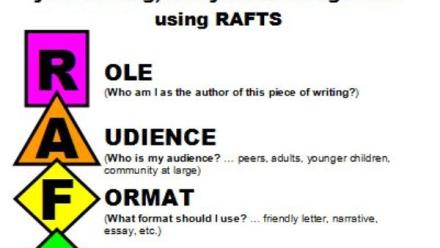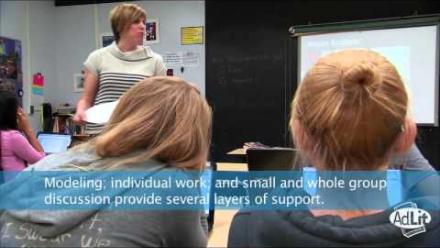Integrating Writing Into Every Subject
It will come as no surprise that researchers have found writing to be an effective tool for enhancing students’ content area knowledge within multiple disciplines (Writing Next, 2007). Writing assignments within content areas have a two-fold purpose.
1. Writing is a powerful tool for students to reflect and express their ideas and understanding.
2. Content-area writing helps students gain familiarity and fluency with specific genres, formats, and writing conventions within a given discipline.
What would it look like if your school integrated writing into every subject? Let’s take a look at a Massachusetts school that made writing an essential element of every teacher’s instruction.
Discipline Specific Writing
Every content/discipline has specific writing formats that are used to share information and show students’ understanding. Students need direction and feedback in how to craft a research paper for their American History class, a Chemistry lab report, or to explain the reasonableness of a solution in their precalculus class. All writing is not the same and students who are proficient at writing lab reports may struggle to compose a comparative essay in their English class. Teacher modeling, practice, and feedback are key to building writers through out the content areas.
Non-language teachers are responsible for those elements of writing that reflect thinking in their subject areas:
Thesis statements: Students need modeling and direct instruction in the kinds of thesis statements that are appropriate in each subject area. This is how students learn the “higher-order” thinking they will need to succeed in that subject area.
Structure and organization: What supporting evidence is relevant to the thesis? How is it communicated in that subject area? How does one judge the appropriateness and relevance of supporting ideas and evidence in a particular subject area?
Transition words and phrases: Transition language communicates to the reader how the ideas are related and how they connect to other knowledge and disciplines. Therefore, transitions need to be explicitly taught and then required in student writing throughout the disciplines.
Content and content-area vocabulary: What are the knowledge and facts upon which students will base their thinking and writing? Of course, subject-area teachers are responsible for determining how best to teach this to students.
Consider the elements of an analytical essay are present in all non-fiction text structures, though they may be called by different names in different subject areas. The chart below identifies the structural elements — thesis statement, evidence/proof, conclusion, and common text structures — in each of the core subjects.
| Thesis Statement | Evidence/ Proof |
Conclusion | Common Text Structures | |
|---|---|---|---|---|
| Literature & Language Arts | Thesis Statement | Quotations from text(s) Examples from and between text(s) Analysis by literary critics |
Conclusion | Compare-Contrast Concept Definition Proposition Support Cause-Effect |
| History/ Social Studies |
Thesis Statement OR Historical Argument |
Historical examples from primary sources Interpretations from historians(secondary sources) Examples of past events or predictions based on prior examples |
Conclusion OR Historical Interpretation |
Cause-Effect Compare-Contrast Concept Definition Proposition Support |
| Science | Hypothesis: What is being proved? |
Experimental results of others Students’ own experimental results |
Results / Analysis Conclusion: Was the hypothesis proven or disproven? How and why? |
Goal-Action-Outcome (lab report) Cause-Effect Compare-Contrast Concept Definition |
| Math | Goal Statement: What is being solved |
Calculations Logic proofs Analysis linked using transitional phrases |
Outcome Statement (one sentence) What is the answer to the problem in context? |
Goal-Action-Outcome Cause-Effect Compare-Contrast Concept Definition |
(From Compose Yourself! A Guide to Critical Thinking & Analytical Writing in Secondary School by Amy Rukea Stempel)




